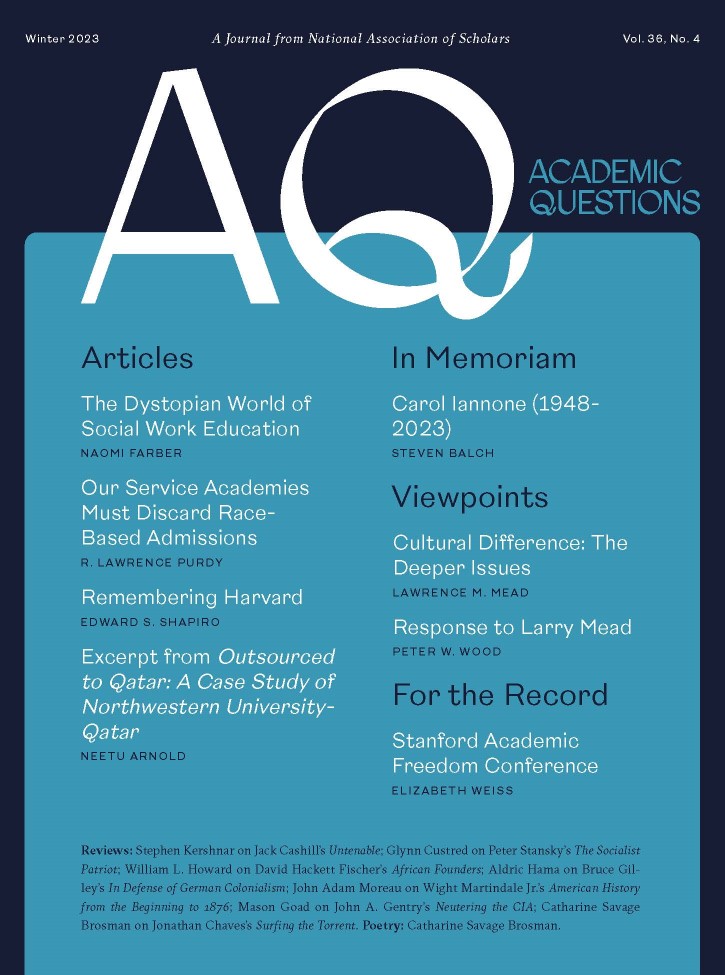African Founders: How Enslaved People Expanded American Ideals, David Hackett Fischer, Simon & Schuster, 2022, pp. 944, $40 hardcover.
African Slaves’ Influence on Colonial America
“Voyage through death
to life upon these shores.”
—Robert Hayden, “Middle Passage”
Over the Juneteenth weekend in the city of Chicago, seventy-five people were shot, thirteen of them fatally. Given the crimes’ locations, all or nearly all—shooters and shot—were black. Newly elected Mayor Johnson, who blames African American problems on institutional racism and disfavors the police, claimed that he had inherited a broken system. He did not address the question of why murder and mayhem rather than the fruits of freedom would manifest themselves in a twenty-first century major American city on the first national holiday celebrating African American liberation.
I was reading African Founders: How Enslaved People Expanded American Ideals by David Hackett Fischer over that weekend, and I found the book and the recent news irreconcilable. How could descendants of a people who overcame slavery, in many cases heroically, be reduced to self-destruction? If racism from without, rather than human perversity from within, were the source of the problem, as is routinely averred, then how can racism in the twenty-first century lead to self-destructiveness when racism of the eighteenth and nineteenth centuries, which justified skin-color as a sufficient reason for reducing Africans to a lifetime of servitude, did not? It would be unfair to expect Fischer’s book to answer such questions. Its subject is colonial American slavery. That the slaves described in it, despite being severely oppressed, helped build America rather than murder each other, does provoke thought, however. Like other outstanding works of scholarship, this book not only clarifies the period of its focus but stimulates questions about subsequent history as well.
Gustave de Beaumont, who accompanied Alexis de Tocqueville on his tour of America, wrote in 1831, “Surely it is a strange fact that there is so much bondage amid so much liberty.” This paradox, according to Fischer, lies “near the center of American history.” That it lies near the center rather than at the center distinguishes this history from the pop history that has gathered attention recently using hyperbolic claims and underwhelming scholarship. The claims of Fischer’s book are significant, but not extravagant, and they are made credible by a persuasive accumulation of evidence.
Fischer calls his book an “inquiry with a genuinely open end” in the tradition of Herodotus. He declines to follow political preconceptions and judge the origins of the United States as either exceptionally fine or exceptionally sinister. He assumes that slavery and racial oppression were common in America as they were in the rest of the world, making this country unexceptional. But he also points out that the “traditions of freedom and liberty and the rule of law” were sources of “enduring strength.” The latter point would imply that this country was in fact exceptional, although he does not say so.
As in his earlier study, Albion’s Seed: Four British Folkways in America (1989), Fischer is particularly interested in tracing patterns of immigration: where immigrants came from and settled, and how they influenced the culture of their new land. For African Founders, he and his wife travelled extensively in West Africa to learn of the differing cultures from which slaves originated. He utilizes databases of slave names, which often reveal the African place of origin as well as the American colony of settlement. Focusing on nine regions of colonial America, he shows correspondences between long-established African regional characteristics and the subsequent development of the American colony to which slaves from those regions were transported. One of his conclusions is that American colonial settlements were influenced not only by groups of Europeans of similar cultural backgrounds but by African ones as well.
Whereas some slave communities might have been random collections of individuals who had little cultural connection to each other, many others were settled in “clusters.” That is, they shared not only geographical origins but language, customs, skills, and beliefs and were more likely to create stronger “systems of comity.” Homogeneous concentrations had a greater impact on the place of settlement. This was particularly true in the northern colonies and was a factor in the early ending of slavery there.
But even in the case of more heterogeneous groupings, the slaves added cultural strength and persistence. They were not mute or passive. If only in the multiple ways they resisted slavery, their conceptions of the way things should go influenced the communities in which they resided. And no value was held in more esteem by slaves from every part of Africa than freedom. Their desire for it served as more than simply an annoyance to slave owners. Fischer argues that it also reinforced and helped propel the European colonists toward their own greatest aspiration. In other words, the Africans’ high regard for freedom resonated in every colonial polity. In addition to the many oppressive measures passed, increasingly there were others designed to mitigate, restrict, or end slavery and expand liberty. Not only in government actions but in innumerable individual cases, the African presence compelled negotiation of freedom’s boundaries. Even a brutal slave master might relent if a slave simply refused to work. And the records of manumissions illustrate that these legal proceedings were not accomplished except through a high regard for freedom shared by both the freed, the freer, and at least some segment of the society they belonged to.
Fischer’s methodology includes the use of the remarkably detailed Trans-Atlantic Slave Trade Database, which provides quantifiable facts about the slave trade from Africa to colonial America. There were thirty-five thousand transatlantic voyages from 1501 to 1867. Some 12.5 million slaves embarked from Africa for the New World, and 10.7 landed. Nearly fifteen percent lost their lives in transit. Of the 10.7 million who survived, 4.8 million were sent to South America, 4.7 to the Caribbean islands, eight-hundred thousand to Central America, and 458,000 to what became the United States. However, the transatlantic trade made up less than half of the total sub-Saharan slave trade. Another fourteen to sixteen million were taken north across the Sahara or east to the Indian Ocean. To put North America’s part in the international slave trade in context, the data reveal that it received less than two percent of all the slaves taken from Africa between 600 and 1900 A.D.
This study is finely tuned and traces particular subgroups of Africans and how they interacted with European settlers. For example, in New England, Fante and Asante slaves from Ghana brought certain “ethical imperatives” to the new world that melded well with the Protestant ethic. “Doing good,” “doing well,” and living out the gospels combined in “a new syncretist ethic.” In the Delaware Valley, Mandinkas from Gambia, who were not by nature revolutionaries so much as “root-and-branch reformers,” fused with anti-slavery, pacifist Quakers to initiate “the first sustained anti-slavery movement in the English-speaking world.”
In the Chesapeake region, the aspiration for freedom of slaves from the Congo and Angola clashed with the cavaliers, whose desire to amass large estates required slaves be permanent property through multiple generations. At the same time, the leadership qualities of those descendants of the best families of England helped inspire many dauntless African Americans, such as Frederick Douglass, Harriet Tubman, Madison Washington, Josiah Henson, and Henry Box Brown. In the Hudson Valley, some of the earliest slave settlers were Angolans who had been converted to Christianity by Portuguese explorers in the late sixteenth and early seventeenth centuries long before being taken from Africa. From their arrival, they protested the enslavement of Christians by fellow Christians. Angolans were also adept at leveraging their own entrepreneurial skills through negotiation with Dutch capitalists who “were less interested in absolute dominion over slaves than in optimal returns on capital investment.” Prosperity achieved, other issues such as legal rights, were negotiable. Fischer noted cases in the middle colonies of slaves initiating lawsuits to resolve issues of fair compensation, one such being taken to the Netherlands for redress. The case was won.
One of the most interesting and least known stories recounted in this study is that of the Black Seminoles. They were escaped slaves from Georgia and South Carolina who joined Seminole tribes in Florida under the protective rule of Spain. Many were descended from African warriors who had been prisoners of war in Africa when they were taken into slavery. They joined the Seminoles in resisting American encroachments on their settlements in three “Seminole Wars.” Over the course of their history in America, the Black Seminoles fought plantation owners, slave catchers, the Georgia militia, the U.S. Marines, the U.S. Army, the Texas Rangers, the Comanche, and the Apache. After the Civil War, they formed a highly respected unit of scouts in the U.S. Cavalry based in Texas.
Sometimes the book seems promotional, its advocacy for African slaves subduing objectivity. If colonial era Africans made bad choices and acted immorally or from less than pure motives, as other human beings do, we are not told. The failings of whites, their government policies, and their character are routinely emphasized, however. It is admirable that Fischer rarely bows to the pressure of political correctness, but occasionally he indicates virtuous disassociation by means of quotation marks. For example, he refers ironically to “Anglo ‘friends of order’” for the local government’s handling of the New York City slave revolt of 1712. In that case, slaves set a building on fire then ambushed those who came to put it out. The colonial authorities sentenced some of those apprehended to brutal punishments, which is apparently the source of Fischer’s disapproval. He might have a point if there were no evidence of an ordered response. But in fact, twenty-seven of those rounded up were released, forty-three given jury trials, and twenty-five convicted. This would suggest that there was in fact order. Furthermore, the royal governor was appalled that some of the sentences were brutal and, with the backing of the Privy Council of London, urged clemency for five of the men. This would also suggest that an ordered system allowed for attempts to rectify abuses of that order. Fischer’s handling of this episode is not egregious, but virtue signaling obscures a question common to all history: why do many cultures use punishments in their systems of order that we in our time and place would consider inhumane? Signaling out “Anglos” of the eighteenth century for scorn reduces a universal phenomenon to one that implies a particularly Anglo (white?) propensity.
Fischer does not subscribe to critical race theory or intersectionality. Slavery is described as an abuse of human rights that was resisted with the help of strong familial, tribal, regional, and cultural roots and eventually overcome because of African initiative and the support of European colonists who applied moral sense instead of self-interest to the slavery question. He relies heavily on a large accumulation of data, and original micro-studies based on them, not generally known outside a narrow scholarly circle. Much of the evidence is recently discovered (or collected), and he does a masterful job of synthesizing and weaving it into a fascinating narrative that substantiates his conclusions. In short, he documents some of what more radically inclined histories have asserted without proof. His purpose is to bring to light all he can find and let the evidence lead his reasoning. At times, this creates a loosely cohering argument, but not a tendentious one.
African Founders opens multiple aspects of a complex history to readers. With the help of a wide range of evidence and by avoiding reductive theories, it makes a strong case that Africans can also properly be termed “American founders.” Fischer writes, “By their presence, and still more by their acts and choices . . . they change[d] the ways that free and open systems worked in what is now the United States. . . . African people who came mostly in slavery made America more open and more free.” Would that their admirable example was more respected and emulated today.
William L. Howard is Professor of English (ret.), Chicago State University. His previous article in Academic Questions was “Does the West Hate Itself?,” a review of Benedict Beckeld’s Western Self-Contempt: Oikophobia in the Decline of Civilizations (2022).
Photo by The New York Public Library on Unsplash













